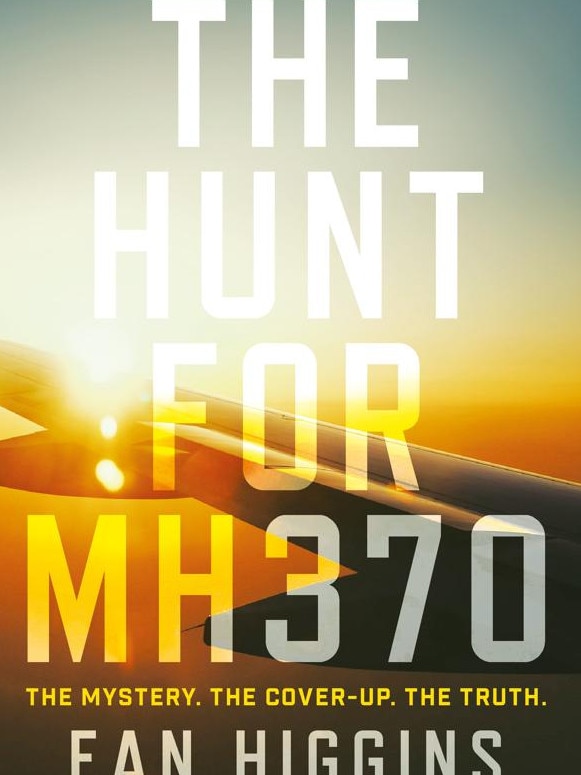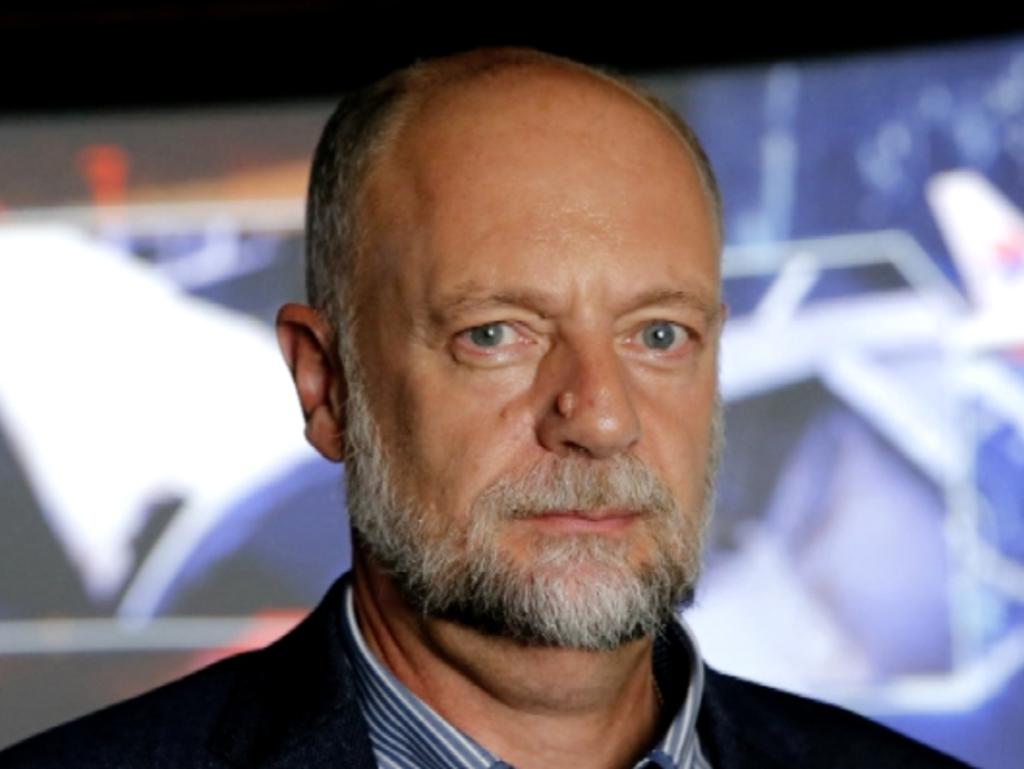Ean Higgins: The reporter who asked the tough questions
Award-winning journalist Ean Higgins was courageous and dogged in his pursuit of the truth.

OBITUARY
Ean Higgins
Journalist, author. Born US, February 15, 1958; died Sydney, about July 8, 2020, aged 62.
Colleagues and friends have paid tribute to The Australian senior journalist Ean Higgins, who is confirmed to have died according to the findings of a NSW Coroner’s inquest.
Deputy State Coroner Elizabeth Ryan ruled on Monday that Higgins died in non-suspicious circumstances when he disappeared in Sydney on July 8, 2020.
Known for his dogged, gung-ho style of journalism and boisterous personality, Higgins carved out a career spanning four decades as a frontline reporter working mainly in The Australian’s Sydney newsroom. He also served as the newspaper’s Europe correspondent, foreign news editor and Inquirer editor.
Higgins wrote many stories and won a Kennedy Award for journalism excellence in 2013 for one article about the bushfires that had ravaged southern NSW earlier that year.
He was also the author of a 2019 book, The Hunt for MH370, about the Malaysia Airlines passenger jet that vanished in March 2014 and is believed to have crashed in the Indian Ocean with all 239 passengers on board.
Higgins’s book was a forensic investigation into what might have happened to the Boeing 777, and followed numerous reports and commentary he had written for The Australian on the subject.
He also worked with Sky News Australia on an investigative documentary, MH370: The Untold Story, which aired on the network, owned by News Corp, publisher of The Australian, in February 2020.
What stood out to anyone who encountered Higgins at work in the profession he loved was his unbridled enthusiasm and commitment to finding the truth. Direct, no-nonsense and forceful if necessary, he was always courageous, willing to ask the tough questions. He never shied away from pursuing the other side of a story if the facts did not fit what others wanted to believe.
When The Australian sent Higgins to New Zealand in 2010 to cover the Pike River coalmine disaster, a gas explosion that killed 29 men, including two Australians, he attended a press conference called by the local police chief in charge of rescue efforts and asked an uncomfortable question.
Why, he asked the police chief, wasn’t the mine manager, with union assistance and technical support, making the decisions about the rescue operation “as the people that actually know what’s going on”?
Some locals took offence at Higgins having the temerity to challenge authority. Several New Zealand government ministers weighed in, branding his line of questioning “boorish” and objecting to his reporting as well. As Higgins later recalled in a story for The Australian, editors in Sydney decided to bring him home for his own safety, such was the testy atmosphere.
Fourteen years later, court action continues in New Zealand to uncover the truth about the disaster amid allegations of profit put before safety, and no one has been held accountable for inadequate conditions at the mine.
Higgins’s persistence as a journalist, however awkward for some at the time, was not only prescient but reasonable and appropriate.
Higgins was born in 1958 in the US, where his Canadian father, Ben, was a pioneering professor at the University of Texas in the emerging field of development economics.
From the start there was an Australian connection for Higgins: his mother Jean was an Australian who’d met Ben during one of his professorial terms at the University of Melbourne. They married and moved to the US.
After spending his early childhood years in Texas, Higgins moved to Canada with his parents when his father was appointed to his next academic post at the University of Montreal.
He attended high school in Montreal and became fluent in French, the official language of his new home province, Quebec. Higgins would remain a keen French speaker all his life, polishing up his language skills with advanced Alliance Francaise courses.
High school in Canada was followed by an undergraduate degree in international relations at the University of Sussex in Britain. Higgins then moved to Canberra in the early 1980s to study for a masters degree at the Australian National University.
From that point, Australia was home. Higgins came to regard himself very much Australian, even if he sometimes joked about having three passports, and never lost his Texan drawl.
Higgins’s parents also retired to Australia, buying Kallarroo, a sprawling farm property with a rustic cottage not far from Canberra near the Snowy Mountains in NSW. He visited them regularly and taught himself to tend sheep on the property. When he later inherited Kallarroo, the farm became a sanctuary for weekend stays and several sabbaticals away from the pressures of daily journalism.
Higgins started his journalistic career as a Fairfax graduate cadet with The Australian Financial Review in Sydney, writing mostly about business and state politics, before a brief run with the Times on Sunday, also Fairfax-owned.
When that publication closed in 1988, Higgins moved to The Australian, where he would work for the next three decades.
Higgins found his natural habitat there, happily introducing himself to new contacts as a journalist for the only true “national daily”. He personally took to heart the idea of the newspaper’s founder Rupert Murdoch that The Australian could succeed only with “the best-informed, the most experienced, the most curious, the most intelligent and the most able journalists in the country”.
Higgins got on well with The Australian’s editors, and relished the paper’s linear editorial direction compared with the more Byzantine management at Fairfax newspapers. Already experienced but now in his prime, he thrived as a journalist.
After several years in The Australian’s Sydney bureau covering general news and industrial relations, Higgins was appointed environment writer. He then took a sabbatical, returning to the paper as foreign news editor and Inquirer editor for The Weekend Australian.
Higgins’s time on the foreign news desk was a prelude to his posting as The Australian’s Europe correspondent, based in London. There he covered, among other stories, the recently elected British Labour government led by prime minister Tony Blair, and the tragic death of Princess Diana.

When he came home, Higgins jumped back into local news as a senior journalist in The Australian’s Sydney bureau.
He covered topics as diverse as the James Hardie Industries’ asbestos scandal, debate over the boycott, divestment and sanctions campaign against Israel and chronic irrigation problems experienced by NSW farmers.
He also had stints as The Australian’s Sydney bureau chief and rural reporter.
For many years Higgins served on the house committee of his union, the Media Entertainment and Arts Alliance, taking a prominent role in enterprise bargaining negotiations to improve wages and conditions for journalists at The Australian and other News Corp newspapers.
Whether serving as a member of staff or representing staff in his voluntary union capacity, it was noticeable to many that Higgins, while passionate about matters at hand, was always cheery and his positive relations with management never wavered.
Apart from breaks at his farm in the early 2000s, before selling the property, Higgins travelled widely. He took several trips abroad, including to France, where he furthered his study of French, and to North America where he visited older half-siblings who were the children of his father’s first marriage.
When The Hunt for MH370 was published, The Australian’s Trent Dalton, who is also the author of Boy Swallows Universe, described Higgins’s book as a “staggering, meticulous and frequently spine-chilling work of long-form journalism”.
Among various theories about what happened to MH370, including a “mass hypoxia event” in which all on board lost consciousness, Higgins was convinced, based on his research, that the most likely cause of the passenger jet’s disappearance was that its captain, Zaharie Ahmad Shah, deliberately crashed the plane with all on board by taking the aircraft off course into the Indian Ocean and running out of fuel.
The aircraft has not been found although a small amount of wreckage washed up on a beach in 2015 at Reunion Island, southwest of Mauritius, in the Indian Ocean.
A year later, another piece of wreckage was found on a Mauritius beach.
Sky News Australia presenter Peter Stefanovic, who worked with Higgins on the network’s MH370 documentary, has credited Higgins’s role in driving the search for the missing aircraft by keeping the story in the headlines. “No amount of government obfuscation kept him at bay,” Stefanovic told Sky News in 2022.
In addition to The Hunt for MH370, Higgins was the co-author of Fortune Strategy: Investment Planning for the Nervous Nineties with Arun Abey. The book was first published in 1995, and an updated version was released in 2000.
The Australian’s editor-in-chief Michelle Gunn, who worked closely with Higgins during his long career with the newspaper, said Ean was a “first-rate journalist and a much-loved member of staff”.
“Ean was a larger-than-life character. He was passionate about the importance of journalism, loved a good yarn and also loved having a good laugh.
“He had many friends on our staff and across the media landscape, and his disappearance was very difficult for everyone.
“This coroner’s finding at last provides some closure and allows us to publicly farewell Ean and to honour his life’s work.”
Higgins, who was 62 when he died, is survived by his son, Ben Higgins, and ex-wife Christina Hardy.



